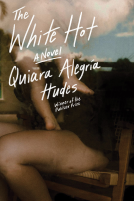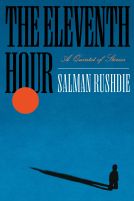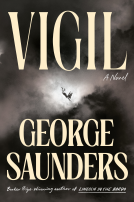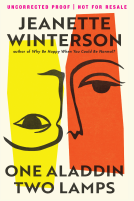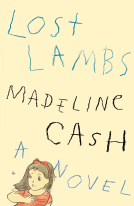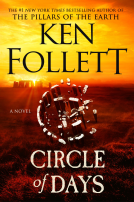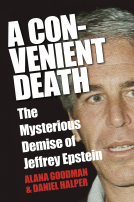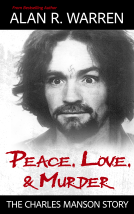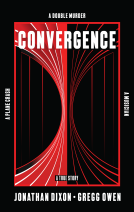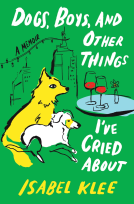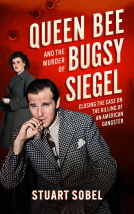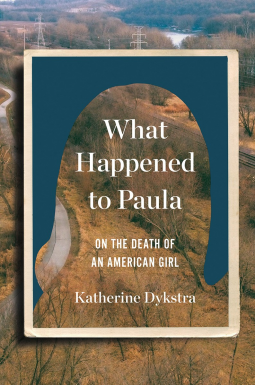
What Happened to Paula
On the Death of an American Girl
by Katherine Dykstra
This title was previously available on NetGalley and is now archived.
Send NetGalley books directly to your Kindle or Kindle app
1
To read on a Kindle or Kindle app, please add kindle@netgalley.com as an approved email address to receive files in your Amazon account. Click here for step-by-step instructions.
2
Also find your Kindle email address within your Amazon account, and enter it here.
Pub Date Jun 15 2021 | Archive Date May 31 2021
Talking about this book? Use #WhatHappenedtoPaula #NetGalley. More hashtag tips!
Description
A riveting investigation into a cold case asks how much control women have over their bodies and the direction of their lives.
In July 1970, eighteen-year-old Paula Oberbroeckling left her house in Cedar Rapids, Iowa, and never returned. A cold case for fifty years, Paula’s story had been largely forgotten when Katherine Dykstra began looking for answers. A woman was dead. Why had no one been held responsible? How could a community give up and move on? Could there ever be justice for Paula?
Tracing the knowns and unknowns, Dykstra discovers a girl who was hemmed in by the culture of the late 1960s, when women’s rights had been brought to the fore but had little practical bearing on actual lives. The more she learns about Paula, the more parallels Dykstra finds in the lives of the women who knew Paula, the lives of the women in her own family, and even in her own life.
Captivating and expertly crafted, What Happened to Paula is a timely, powerful look at gender, autonomy, and the cost of being a woman.
About the Author: Katherine Dykstra is a writer, editor, and teacher. Her essays have been published in the Washington Post, Poets and Writers, and Real Simple, among other periodicals.
Available Editions
| EDITION | Hardcover |
| ISBN | 9780393651980 |
| PRICE | $26.95 (USD) |
Average rating from 15 members
Featured Reviews
True crime meets intersectional feminism - but really, the two have always gone hand in hand. Katherine Dykstra @ktdsees highlights the unsolved and mostly forgotten murder of Paula Oberbroeckling, a white teen girl in Cedar Rapids, Iowa in 1970. Dykstra's connection to Paula's murder is Susan, her own mother-in-law (who is from Cedar Rapids and was a year behind Paula in school). Dykstra explores the mystery around Paula's murder, the incompetence of the police, the societal trends and expectations the murdered girl may have bucked. But, she makes it clear she hasn't identified a killer and, fifty years on, she likely never will. Where this book triumphs is her linking of Paula's unsolved murder to the gendered violence and misogyny perpetrated against women. She recounts the societal shifts Paula's murder occurred on the cusp of (the women's rights movement, the Roe v. Wade decision, etc.) but always through a feminist and intersectional lens. Yes, what happened to Paula was awful, but she points out Black women experience similar violence in greater numbers. Fans of traditional true crime books might be disappointed in this book, but it correctly and IMPORTANTLY highlights the importance of talking about violence against women - especially BIPOC women - and the grave injustices all women experience at the hands of the patriarchy. #WhatHappenedToPaula Rating: 😊 / really liked it
•
This book is scheduled for publication on June 15, 2021. Thank you @w.w.norton for providing me this digital ARC via @NetGalley in exchange for an honest review.
Thanks to NetGalley for the ARC. The opinions expressed herein are mine alone and may not reflect the views of the author, publisher, or distributor.
As a lifelong true crime reader, I'm not sure why this sudden craze in consuming true crime popped up. Some infamous fandoms tend to make me question whether or not that's a good thing. But then there are podcasts like The Fall Line and Someone Knows Something that bring to light cases that haven't made the nightly news, cases where the marginalized voices we need to hear don't get heard. This happened to the very subject of WHAT HAPPENED TO PAULA.
Katherine Dykstra hits the nail on the head when she talks about true crime being necessary in opening up wounds that haven't healed, and in bringing justice to victims and families who have been forgotten or overlooked. Sure, we get creeps like Payne Lindsey, who take all the credit for doing nothing when a case has been solved, and even go so far as to nearly get innocent people arrested based on tissue-thin accusations. But people like Billy Jensen, Michelle McNamara, Leslie Rule, and David Ridgen work with compassion and intelligence and great respect for these traumas.
Now, if I may, we can add Katherine Dykstra to that list.
We can't always wrap something up, and sometimes--to my great dismay--there's no way of knowing why or how someone really died. Paula Oberbroeckling lived in an incredibly tumultuous time that was in no way friendly toward women who had sex. (You know, as women, being people, tend to do. Go figure.) In the days before Roe v. Wade--and if you weren't a white person of means--seeking out an abortion was an horrific affair. Dykstra examines the circumstances and socioeconomic setup that may have contributed to Paula's death. The police took Paula's disappearance to be a simple case of a young girl running away, despite a pile of evidence in favor of something being terribly amiss. Unfortunately, when they found her body, four months of exposure had wiped away any clues to how she had died, and who, if anyone, had claimed her life.
Because of the circumstances here, Dykstra can only give us more questions than answers: Was Paula really pregnant, or was it a scare? Did the normalization of domestic abuse and violence in an era where people tolerated violence against romantic partners lead to her death? Who is responsible for taking such a young life just in bloom? And what's more, are police complicit in a crime when they refuse to investigate it properly, or at all?
Paula's life ended when she was eighteen. By all standards, she was still a child. She left behind a mother and sister who feel that absence every day. Someone got away with dumping her body, whether or not they killed her. Dykstra doesn't pretend that she can solve this crime. She doesn't profess to knowing exactly what happened, and for that I commend her. She has a touch for the human element that gives these forgotten cases heart and humanizes the people involved. I genuinely hope Katherine Dykstra continues in true crime. She could be a valuable asset to the community.
Katherine Dykstra’s What Happened to Paula: On the Death of an American Girl (Norton 2021) is a thoroughly researched and deeply personal account of a woman’s investigation into the death of a midwestern American teenager. It also discusses the through lines that Paula’s victimization has with women’s lives across time, including the author’s own.
Late one night in July 1970, Paula Oberbroeckling borrowed her roommate’s car in Cedar Rapids, Iowa. She was barefoot, wearing a summer dress, and planned to be back in time for her roommate to leave for work in the morning. Although the car was later found abandoned on the side of the road, Paula was not found with it. Indeed, her body was not discovered for months. Eventually she was found bound and dumped at the edge of a culvert. The case quickly went cold and sat unsolved and uninvestigated for fifty years before Katherine Dykstra began looking into the case, following in the footsteps of her mother-in-law, who also took an interest in the case. What Happened to Paula follows Dykstra’s investigative efforts and her discovery of deep, systemic injustices that allowed Paula, and so many other girls like her, to fall through the cracks.
The text is a “quintessential Midwestern gothic, the flat landscape and pristine surfaces masking dark underbellies, the veneer of calm and tidy, beauty and success, rolling golf courses with clear edges over a labyrinth of complex emotion, cops who didn’t do their jobs, corrupt officials, a beautiful young woman with a complicated story.” What Happened to Paula innovatively undercuts some of the major tenants of the true crime genre. Although it is ostensibly based on a true crime, the text takes that crime as its starting point and moves in several different directions. As Dykstra says in the opening of her narrative: finding out what happened to Paula is not as simple as catching and confirming her killer. Rather, what happened to Paula was a series of injustices that began long before she left, barefoot, on that July night, and continued long after. Indeed, Dykstra takes up Paula’s story as the untold story of many women in Paula’s position in the twentieth century.
“…over the course of the years I spent researching and writing Paula’s story, it dawned on me that what I wanted to say about her death was less true crime and more sociological study. Meaning, though a girl had been killed, and though the details of her disappearance and death are important and will be included in the pages of this book, this is not about a murderer. … The onus of her death extends well beyond whoever dumped her body down that hill.”
Indeed, beyond Paula, “there are a lot of dead girls in this story.” Dykstra’s narrative examines the laws and social regulations that kept women and other marginalised people as second-class citizens whose bodies were not entirely their own throughout the twentieth century and into the present day. Dykstra’s research includes issues around abortion, race relations, gender stereotypes, financial and occupational exclusion, and, of course, violence against women. The text is extremely well-researched, and Dykstra attempts to provide a full and complete picture of what life as a woman with Paula’s set of circumstances might have been like for Paula, and the choices she might have felt driven to make.
This “was the story of a small city and small-city police, of disappointment and squandered potential, of race and class and sex. A story that became more complex the deeper one dug. A story all the more compelling for the fact that it had been mostly forgotten even though the case still yawned wide open.”
Additionally, although Dykstra is also a journalist, the text has the personal and emotional detail of memoir. Weaving her story and the stories of her mother and grandmother throughout the narrative of Paula’s family tree, the text collapses multiple timelines and histories to speak more widely about women’s subordinate social position and the circumstances that lead to disadvantage, dependence, and danger for women like Paula.
Certainly, if you are a reader who is looking for a more ‘classic’ true crime story, this may not be the book for you. Its engagement with the tenants of women’s writing and memoir are compelling, but they often move away from and beyond strictly investigative journalism. As a true crime reader who is interested in the confluence between memoir and true crime, I found this interesting and compelling, but it was also jarring before I learned how to read and understand this complex text. With What Happened to Paula, it is important to be prepared for a confluence of genres and angles that don’t always stay directly connected to the case. Because Dykstra’s involvement in this investigation is so personal, and because a wide variety of historical research is used to supply evidence and relevant points, the text veers away from the case at hand and what we might expect from a true crime narrative. Dkystra is correct when she writes that this book is more of a sociological study than a true crime text, but her writing poses an interesting intervention in the genre, and asks: is there such thing as closure when “once wounded, we [are] always wounded”?
A story about a fascinating a little-known case, What Happened to Paula is an interesting intervention in the true crime genre, with a socially conscious and relevant narrative viewpoint. I highly recommend this book to anyone focused on women’s histories and interventions in the way we tell true crime stories.
Please follow Katherine Dykstra on Twitter and add What Happened to Paula to your Goodreads shelf.
Don’t forget to follow True Crime Index on Twitter and please visit our Goodreads for updates on what we’re reading! You can find Rachel on her personal @RachelMFriars or on Goodreads @Rachel Friars.
About the Writer:
Rachel M. Friars (she/her) is a Doctoral Candidate in the Department of English Language and Literature at Queen’s University in Kingston, Ontario. She holds a BA and an MA in English Literature with a focus on neo-Victorianism and adaptations of Jane Eyre. Her current work centers on neo-Victorianism and nineteenth-century lesbian literature and history, with secondary research interests in life writing, historical fiction, true crime, popular culture, and the Gothic. Her academic writing has been published with Palgrave Macmillan and in The Journal of Neo-Victorian Studies. She is a reviewer for The Lesbrary, the co-creator of True Crime Index, and an Associate Editor and Social Media Coordinator for PopMeC Research Collective. Rachel is co-editor-in-chief of the international literary journal, The Lamp, and regularly publishes her own short fiction and poetry. Find her on Twitter and Goodreads.
A copy of this book was graciously provided by the publisher in exchange for an honest review.
Readers who liked this book also liked:
Jeanette Winterson
Biographies & Memoirs, Essays & Collections, Nonfiction (Adult)
John Lee Bishop
Biographies & Memoirs, Nonfiction (Adult), True Crime
Alan R. Warren
Biographies & Memoirs, History, True Crime
Isabel Klee
Biographies & Memoirs, Nonfiction (Adult), Travel
